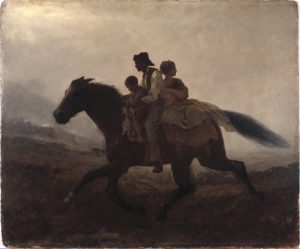Unit 1 Summary–Tell me what you learned as we worked through Unit 1 (formal analysis and critical pedagogy). The ideal summary will put two or three concepts, ideas, or quotes from the reading in dialogue with each other. This is your opportunity to show me that you have learned something, and to tell me what that is and why it matters to you.
In Unit 1 we learned about the critical pedagogy through Pablo Freire’s Banking model and we learned how to utilize formal analysis when encountering art pieces. Pablo Freire’s banking model is a criticism of the current way of teaching. He compares the information given by the teacher to student as a deposit from an individual to the bank. He also adds that the student is asked to retain the information for the sole purpose to spit it back up and not to analyze and study it. Friere’s banking model makes it clear that he advocates for a more interactive form of teaching in which teachers aren’t restricted to a criteria and forced to repeat the same lesson over and over again and for students to be actually voluntarily invested in what they’re learning for the sake of their education and not for some test.
Formal analysis is a perfect technique satisfying Freire’s ideal teaching method when it comes to Art pieces because it allows for an individual to analyze every single element that makes up the piece and to fully interpret the meaning behind it which Anne D’alleva describes it best as she states it is not “simply describing what you see in an artwork” but tackling “what the artist wants to convey visually” (27). Formal analysis looks at four different characteristics within the art piece: color, line, space and mass, and scale, but contextual analysis (looking at a pieces cultural and historical context) may also contribute to an art piece interpretation as Anne D’alleva adds that “it’s hard to separate them out completely. Often, art-historical analysis requires us to do both at the same time” making contextual analysis an unofficial but important characteristic for students to look out for when approaching an artwork (26).
Friere’s banking model is something that I very much believe in and have dealt with my entire school life; In elementary school, I was trained for state exams; In middle school, I was trained for finals and mid-terms; and in High school, I was trained for regents and SATs. Now looking back I vaguely remember what I was taught or the last time I applied what I had learned to my present day-life but with the introduction of formal analysis, I’ve been able to enrich my knowledge of different art pieces I’ve always admired. I from a very young age have always loved to visit museums, especially art museums and I look forward to going to the Met and enriching my self by taking my time to analyze why a canvas is as big as it is; why an artist chooses a certain palette; or why he chooses to use oil painting rather than watercolor. Discovering formal analysis has forever changed the way I view art and it has allowed me to transition from a casual viewer to an academic art student.





